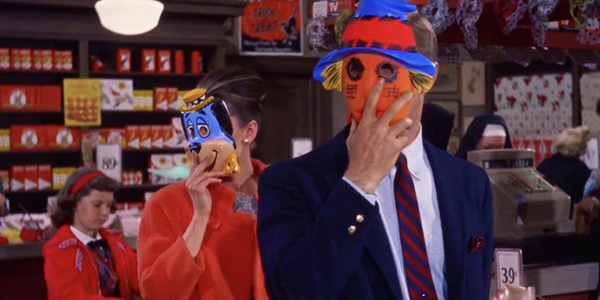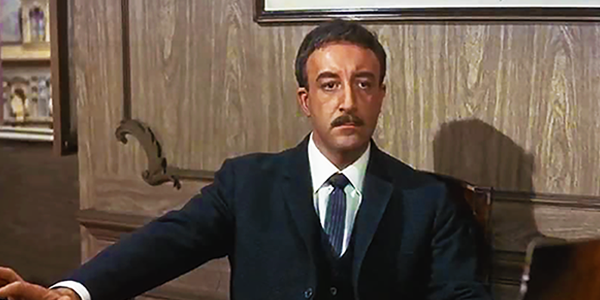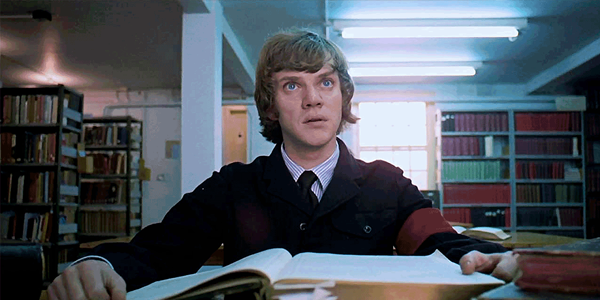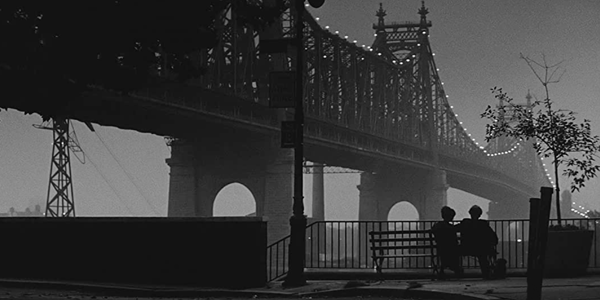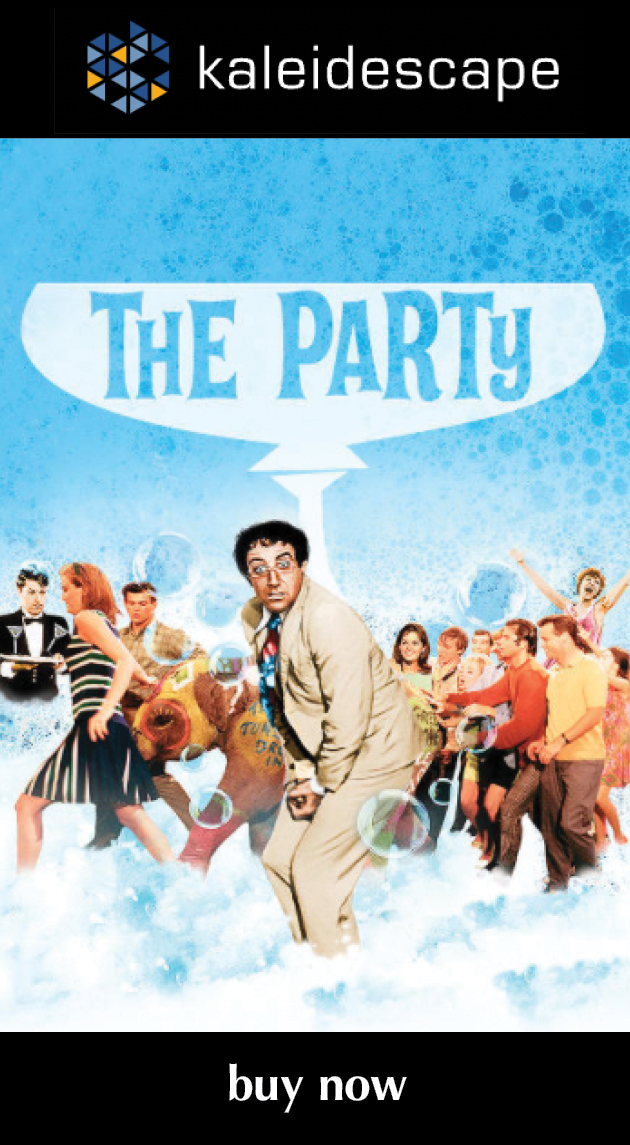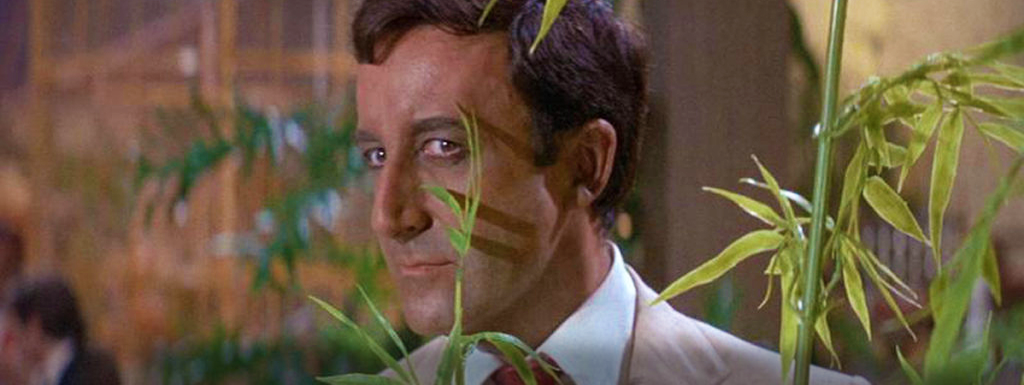
review | The Party
This rowdy Blake Edwards comedy has gone from bomb to classic but has never gotten the presentation it deserves
by Michael Gaughn
March 21, 2021
Blake Edwards’ The Party actually opened on the same day as 2001: A Space Odyssey in that very strange year of 1968. It took a while for 2001 to gain some traction but it eventually became a big deal (thanks largely to a faithful following of stoners) and went on to become a classic. The Party closed almost immediately and the twin blows of that and the godawful Darling Lili almost obliterated Edwards’ career. But the film has shown surprising tenacity, and while it doesn’t have anything like 2001’s reputation, it is, in its broad, neurotic, and fundamentally conservative way, a deeply radical film.
Oddly, The Party and 2001 have things in common beyond springing from a radical impulse, primarily that, while they both have audio, they’re basically widescreen silent films—an itch Jacques Tati scratched at around the same time with Playtime. (It wouldn’t be inapt to see that retreat into silence as a kind of traumatic reaction to the times.)
But The Party’s biggest—and highly dubious—honor is that it single-handedly created the frat-boy/gross-out comedy genre that eventually proved stupidly lucrative for the studios and still plagues us today. And that, of course, has since morphed, as the culture has grown more callous, into the even more smug and sadistic genre of horror comedy. But Edwards can’t really be held responsible for that last crime against humanity.
And then there’s the fact that The Party would fall somewhere near the top of that daily longer list of films that could never be made today. The announcement that anyone like Peter Sellers was going to play an Indian in a comedy would cause vast hordes of rabid Millennials to well up trailing endless miles of hangman’s rope, Edwards’ and Sellers’ intentions and the actual execution of the film be damned. The sad truth is that any form of expression outside of some very rigid and oppressive guardrails has become verboten. There was far more latitude in the mid ‘60s, obviously, but nobody was quite sure what to do with the freedom that had suddenly tumbled into their laps.
That anyone who could enjoy this film might be dissuaded from watching it just because some zealots have labeled it “racist” is tragic.
While Edwards tried to make important films—including some basically unwatchable dramas—and dabbled in social commentary, he was mainly an extremely gifted metteur en scène with a deeply intuitive sense of the physics of comedy who probably would have been happiest doing slapstick shorts in the 1920s but was born too late. The first Pink Panther film is a work of genius, an almost flawless classical farce in the style of Molière, Feydeau, and Beaumarchais. Its followup, A Shot in the Dark, is OK but begins to feel forced. All of the subsequent Panther films aren’t worth the time it takes to watch them.
The Party is essentially Edwards’ baffled reaction—common to square-but-desperate-to-seem-hip society in the ’60s—to almost the whole of the social order being tossed into a blender. It takes the sophisticated, ’50s-inflected chaos of the party scene in Breakfast at Tiffany’s—a milieu he knew well—and wonders what would happen if that anarchy-within-bounds were allowed to roam free. But Edwards didn’t have a politically rebellious bone in his body, so the best he could arrive at was something that often resembles the finale of a Beach Blanket movie. Only the fact the he was a far more talented director than William “Bewitched” Asher begins to redeem this mess.
But it’s a both beautiful and nasty mess, and something to be savored—beginning, of course, with Sellers. This is his last great comic performance. After reaching his peak with Strangelove, Clouseau, and, here, Bakshi, he had little left to give and spent the next decade and a half stumbling from one mediocre film and half-hearted performance to another. (Being There is such an oddity it’s hard to say where it falls in all that.)
This is also his most fully rounded performance. Bakshi obviously meant something to Sellers (and Edwards) and he took the time to develop him into a complete character with a resonance that goes well beyond his comedic presence. You can laugh at him but at the same time can’t help but feel for him. None of Sellers other creations evoke that kind of emotional response.
While there are some perfectly tuned supporting performances (with the exception of the unfortunate Claudine Longet), they are all, appropriately, meant to create foils and a frame for Sellers. About the only thing that approaches deserving second billing is the studio head’s cringe-worthy home. Edwards and cinematographer Lucien Ballard captured the sheer awfulness of mid-‘60s West Cost architecture and design, and, again echoing Tati, turned this hideous altar to status into a character. It’s so ugly it’s, within the context of the film, beautiful.
Edwards and Ballard set up elaborate widescreen compositions with multiple bits of business playing out at the same time. The dinner scene contains endlessly cascading sight gags that display virtuoso timing and reward repeated viewing. (This was one of the first films to use a Sony video system for playback, which Edwards deftly deployed to develop his set pieces.)
You can’t say The Party looks great in Blu-ray-quality HD, but you can’t say it looks lousy either. The opening titles are better defined, less blotchy, than they’ve been in the past, and the increased detail helps enhance the impact of complex set pieces like that dinner scene, which have just been visually busy before. The film would obviously benefit from a bump up to 4K, but you can also see where certain elements would likely just look like too contrasty exercises in excess grain.
(One quick aside: No other Edwards film looks and moves like this one, which can probably be largely attributed to Ballard, who cut his teeth shooting shorts for The Three Stooges and who would move on from The Party to shoot The Wild Bunch. Like I said, it was a very strange year.)
Poor Henry Mancini. Just four years earlier, on the heels of Peter Gunn, Breakfast at Tiffany’s, and The Pink Panther, he had been the king of the pop music world, but the British Invasion had since all but wiped him from the face of the planet, and you can sense him struggling mightily here to figure out how he fits into a world of Day-Glo, psychedelica, and fuzz-tone guitars. The answer, unfortunately, is that he doesn’t, and his title song, with its sitar played with a Garden Weasel, ragtime syncopations, and Keith Moon at a high-school dance drumming, is so out of touch it’s unintentionally funny.
The Party should have a surround mix on par with the brilliance of its visual gags but it would be impossible for anyone, at this late date, to get far enough onto Edwards’ wavelength to pull something like that off. So what we get instead is serviceable but not what the film deserves.
There’s something deeply medieval about the present, where the most honest and potent creative works are being forced into hiding, held in some form of safekeeping until the day—that may never come—when they can again be appreciated for what they are. The Party, at its heart, is a tale of the outsider—and it’s exactly the iconoclasts, the outsiders, who are being purged. Enjoy it for what it is, but also for the badly needed context it provides.
Michael Gaughn—The Absolute Sound, The Perfect Vision, Wideband, Stereo Review, Sound & Vision, The Rayva Roundtable, marketing, product design, some theater designs, a couple TV shows, some commercials, and now this.
PICTURE | You can’t say The Party looks great in Blu-ray-quality HD, but you can’t say it looks lousy either. The film would obviously benefit from a bump up to 4K, but you can also see where certain elements would likely just look like too contrasty exercises in excess grain.
SOUND | The Party should have a surround mix on par with the brilliance of its visual gags but it would be impossible for anyone, at this late date, to get far enough onto Edwards’ wavelength to pull something like that off. What we get instead is serviceable but not what the film deserves.
© 2025 Cineluxe LLC


